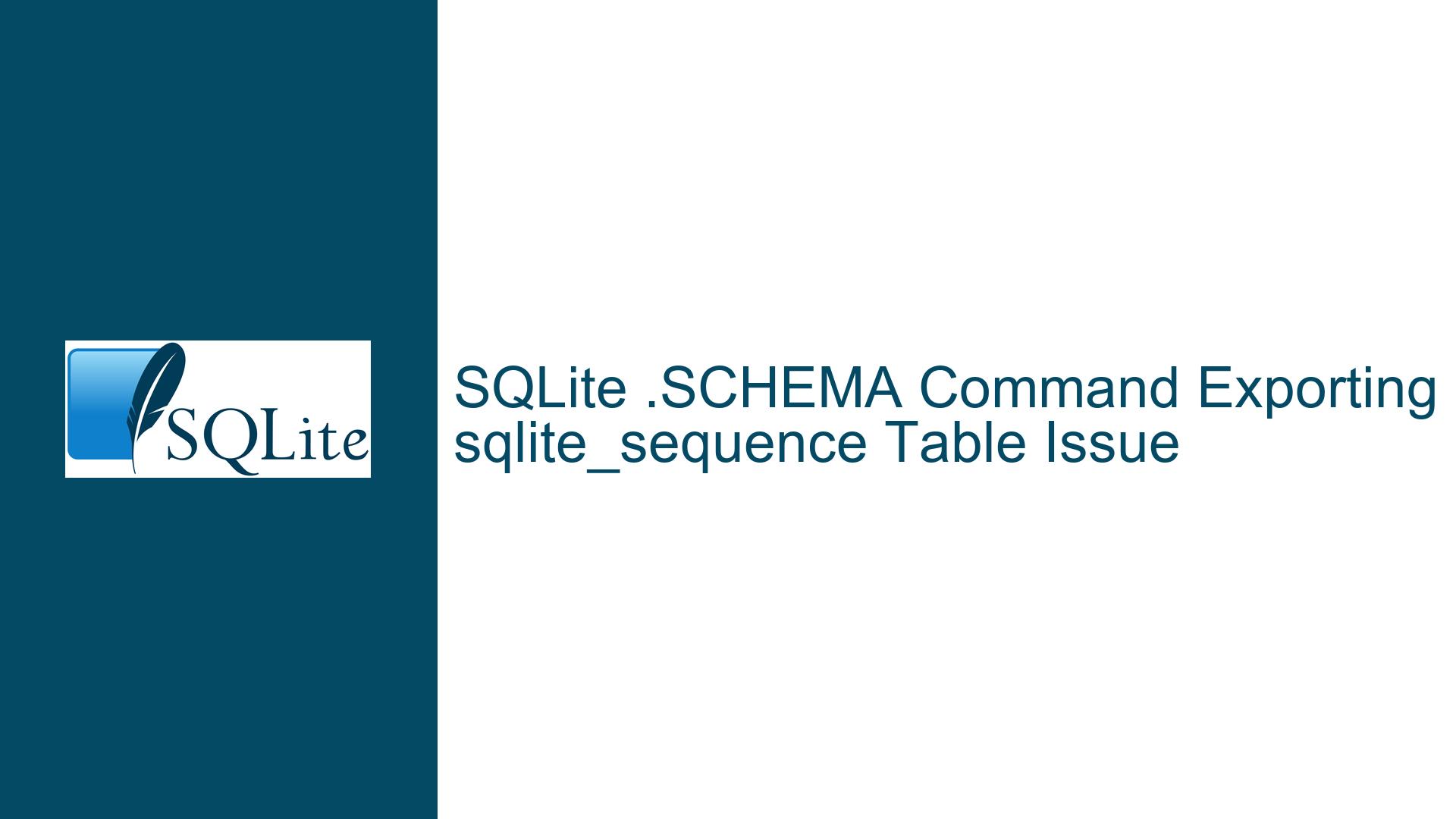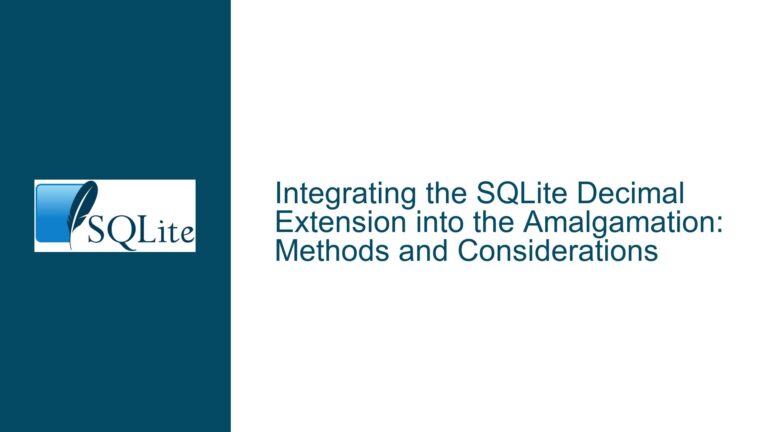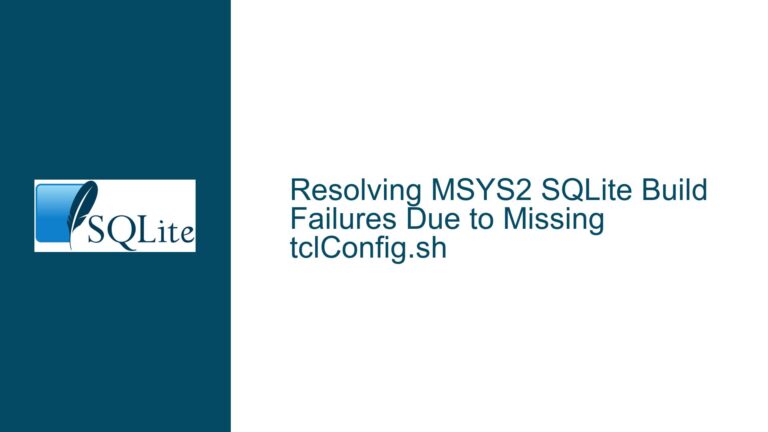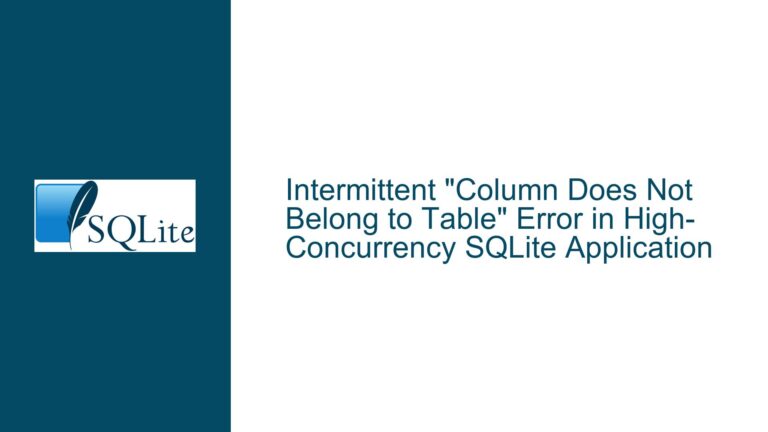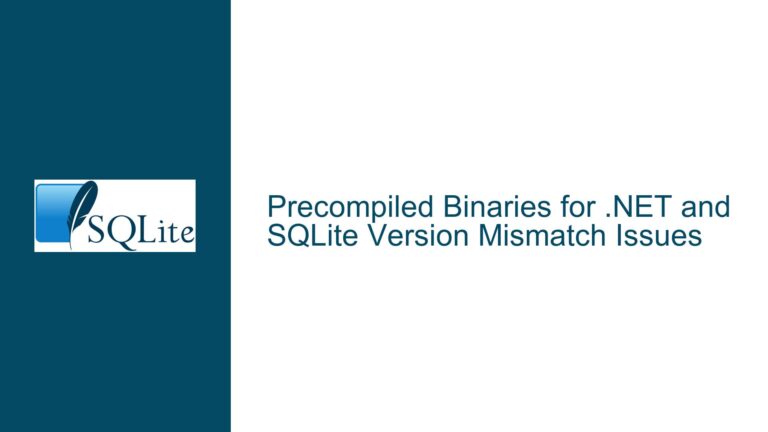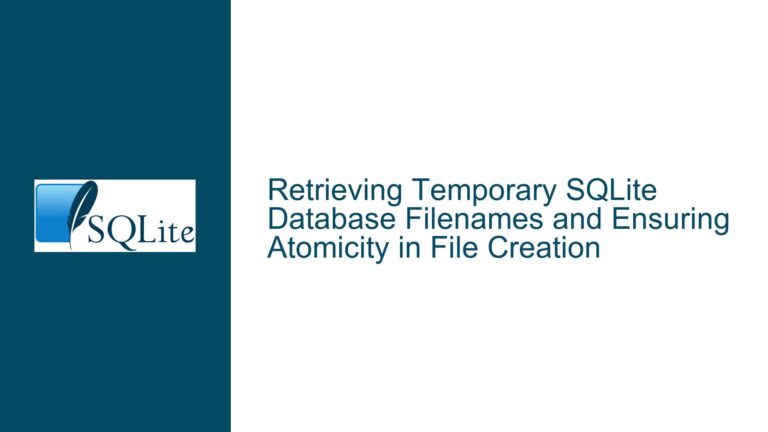SQLite .SCHEMA Command Exporting sqlite_sequence Table Issue
SQLite .SCHEMA Command Exporting sqlite_sequence Table
The SQLite .schema command is a powerful tool used to generate the SQL statements necessary to recreate the schema of a database. This includes tables, indexes, triggers, and views. However, a notable issue arises when the .schema command exports the sqlite_sequence table. The sqlite_sequence table is an internal table used by SQLite to manage AUTOINCREMENT values for tables that have an AUTOINCREMENT column. When the exported schema, which includes the sqlite_sequence table, is fed back into the SQLite CLI, it results in an error because the sqlite_sequence table is not meant to be manually created or altered by users.
The core of the problem lies in the fact that the .schema command does not differentiate between user-defined tables and internal system tables like sqlite_sequence. This can lead to complications when attempting to recreate a database from the exported schema, as the SQLite CLI will reject the creation of the sqlite_sequence table, necessitating manual intervention to remove the table definition from the exported SQL file.
Internal System Tables and AUTOINCREMENT Management
The sqlite_sequence table is an internal table that SQLite uses to keep track of the highest sequence number for tables that have an AUTOINCREMENT column. When a table with an AUTOINCREMENT column is created, SQLite automatically generates the sqlite_sequence table if it does not already exist. The table contains two columns: name and seq. The name column stores the name of the table with the AUTOINCREMENT column, and the seq column stores the last sequence number used for that table.
The sqlite_sequence table is managed entirely by SQLite, and users are not supposed to interact with it directly. When the .schema command exports the sqlite_sequence table, it includes the SQL statement to create this table, which is not necessary and can cause issues when the schema is imported back into SQLite. This is because SQLite will automatically create the sqlite_sequence table when needed, and attempting to create it manually can lead to errors.
The inclusion of the sqlite_sequence table in the schema export is particularly problematic because it forces users to manually edit the exported SQL file to remove the table definition before they can successfully import the schema. This manual step is error-prone and can lead to inconsistencies if not done correctly. Additionally, the presence of the sqlite_sequence table in the schema export can be confusing for users who are not familiar with SQLite’s internal mechanisms, leading to unnecessary troubleshooting and frustration.
Using the –nosys Option to Exclude System Tables
To address the issue of the .schema command exporting internal system tables like sqlite_sequence, SQLite introduced the --nosys option. This option modifies the behavior of the .schema command to exclude system tables from the exported schema. When the --nosys option is used, the .schema command will only export user-defined tables, indexes, triggers, and views, leaving out internal tables such as sqlite_sequence and sqlite_stat1.
The --nosys option is a significant improvement because it eliminates the need for manual editing of the exported schema. By excluding system tables, the exported SQL file can be directly imported back into SQLite without any modifications, streamlining the process of schema migration and backup. This option is particularly useful for database administrators and developers who frequently need to export and import database schemas, as it reduces the risk of errors and saves time.
To use the --nosys option, simply append it to the .schema command in the SQLite CLI. For example, the command .schema --nosys will generate the schema for all user-defined objects while excluding system tables. This ensures that the exported schema is clean and ready for import without any additional steps.
In addition to the --nosys option, it is also important to understand the role of other system tables in SQLite. Tables like sqlite_stat1 are used by the SQLite query planner to store statistical information about the distribution of data in tables and indexes. These tables are also managed internally by SQLite and should not be manually created or altered. The --nosys option helps to avoid issues with these tables as well, ensuring that the exported schema only includes objects that are under the user’s control.
In conclusion, the issue of the .schema command exporting the sqlite_sequence table can be effectively resolved by using the --nosys option. This option ensures that internal system tables are excluded from the schema export, allowing for a seamless import process without the need for manual intervention. By understanding the role of system tables and using the appropriate options, users can avoid common pitfalls and maintain a clean and efficient database schema management process.
